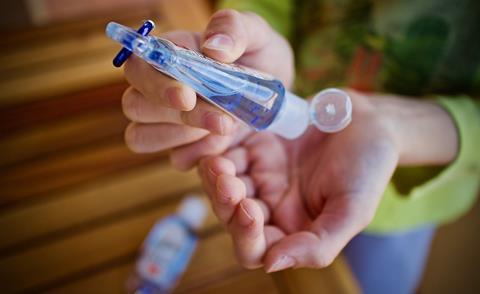Some viruses are known to remain infectious for a long time on surfaces. To determine this period for RSV, a virology team from Ruhr-University Bochum examined how long the virus persists on stainless steel plates at room temperature.

“Even though the amount of infectious virus decreased over time, we still detected infectious viral particles after seven days,” says Dr. Toni Luise Meister.
“In hospitals and medical practices in particular, it is therefore essential to disinfect surfaces on a regular basis.”
A test of five surface disinfectants containing alcohol, aldehyde and hydrogen peroxide showed that all cleaning agents inactivated the virus effectively on surfaces.
Easier to render harmless
Likewise, hand sanitizers recommended by the WHO showed the desired effect.
“An alcohol content of 30 percent was sufficient: we no longer detected any infectious virus after hand disinfection,” points out Toni Luise Meister. RSV is thus easier to render harmless than some other viruses, such as mpox virus or hepatitis B virus.
Still, most infections with RSV are transmitted from one person to another, via droplets from the air we breathe. The risk of contracting the virus from an infected person decreases if that person rinses their mouth for 30 seconds with a commercial mouthwash.
Power of mouthwash
The lab tests showed that three mouthwashes for adults and three of four mouthwashes designed specifically for children reduced the amount of virus in the sample to the point that the virus could no longer be detected.
“If we assume that these results from the lab can be transferred to everyday life, we are not at the mercy of seasonal flu and common cold, but can actively prevent infection,” concludes Toni Luise Meister.
“In addition to disinfection, people should wash their hands regularly, maintain a proper sneezing and coughing etiquette, and keep their distance from others when they’re experiencing any symptoms.”







No comments yet